Do townhomes drive down housing costs? Social science has an answer
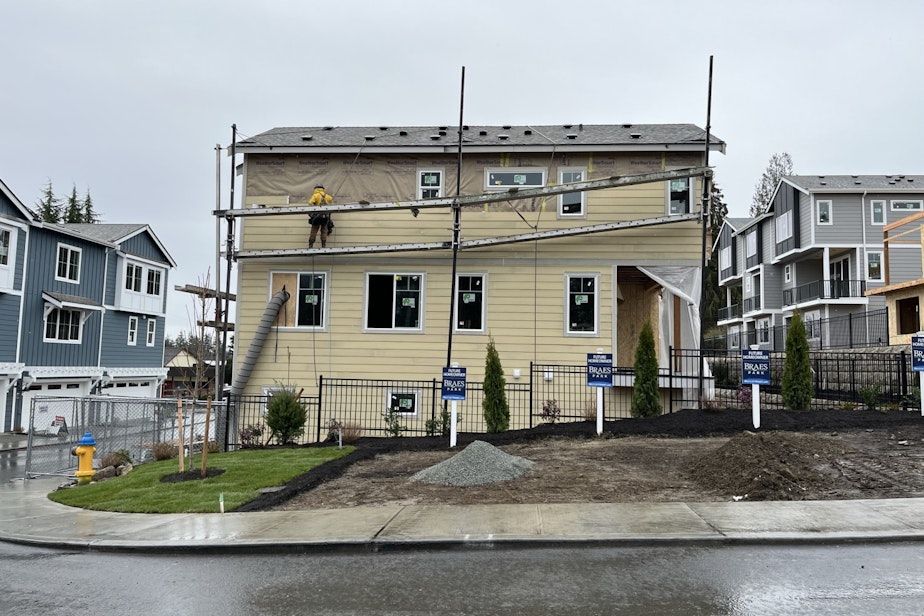
Townhomes are cheaper to build than single-family homes. Homebuyers and renters may not see savings though, unless a lot more homes hit the market.
In our continuing coverage of Washington state's landmark "middle housing bill," which would allow more townhomes statewide, we dig into the question of whether density can bring housing prices down.
I
n this story, we'll talk to a developer and a social scientist.
We’ll start at a busy construction site in Edmonds, Washington, full of carpenters, plumbers, roofers, and drywallers.
Sponsored
We’re at this development because it offers a perfect case study, to examine the cost differences between single-family homes and townhomes.
This development has both kinds, just a stone’s throw away from each other.
Kerek Edwards is the company president of Wescott Homes, the developer. He leads us through a tour of both, showing off their similarities.
Both have three bedrooms, three and a half bathrooms, and two-car garages.
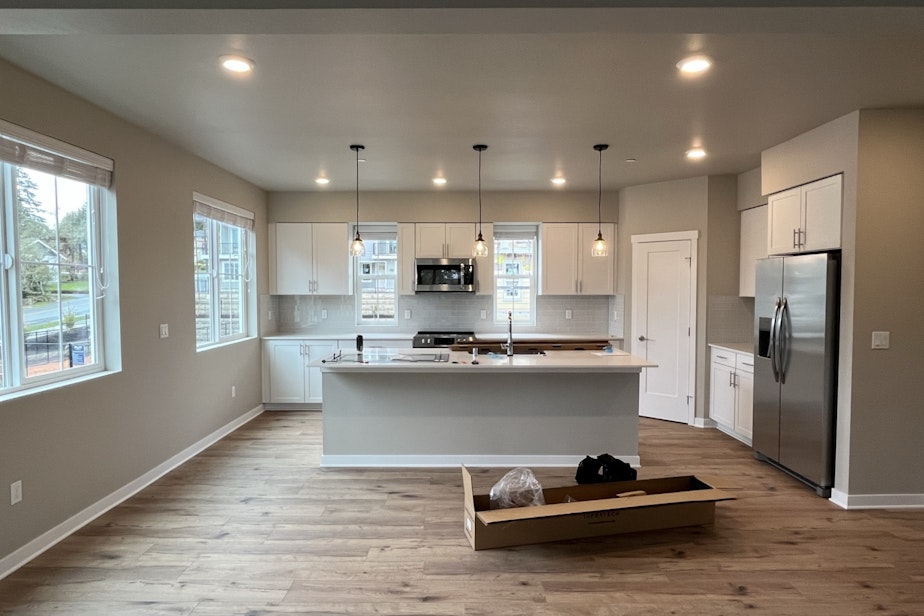
Sponsored
Both have the same finishes: quartz countertops, luxury vinyl plank flooring, and vinyl windows.
The single-family home’s a little bigger and also comes with a small back patio. But basically, this is as close a comparison as you can get.
“These two homes will live very similar – and they will accommodate similar-sized families – but they are very different in terms of, on a large scale, how many you can fit within a parcel of land, how much area they take, how much road, improvements, and infrastructure they will require.”
The most important difference is their cost to build.
Edwards pulls a printout of an excel spreadsheet, and walks me through the project’s finances.
Sponsored
The townhomes are less expensive to build at every turn.

L
et's drill down on one line item to understand why: the cost of a linear foot of street frontage.
Imagine a street. Not just the road and sidewalks, but the landscaping too – and all the underground utilities, like water lines, sewer lines, and power, cable, and phone lines.
Sponsored
Now, take that street – that bundle of services and utilities – and stretch it out into a line, and cut it up into one-foot thick slices, like a giant sausage.
Assuming each street has houses on both sides of the road, each linear foot of that street, every slice of that "road sausage," costs this developer $7,000 to build.
The narrow single family homes they’re building here are much more spread out – they each require 38 linear feet of road (older single family homes typically have even wider lots).
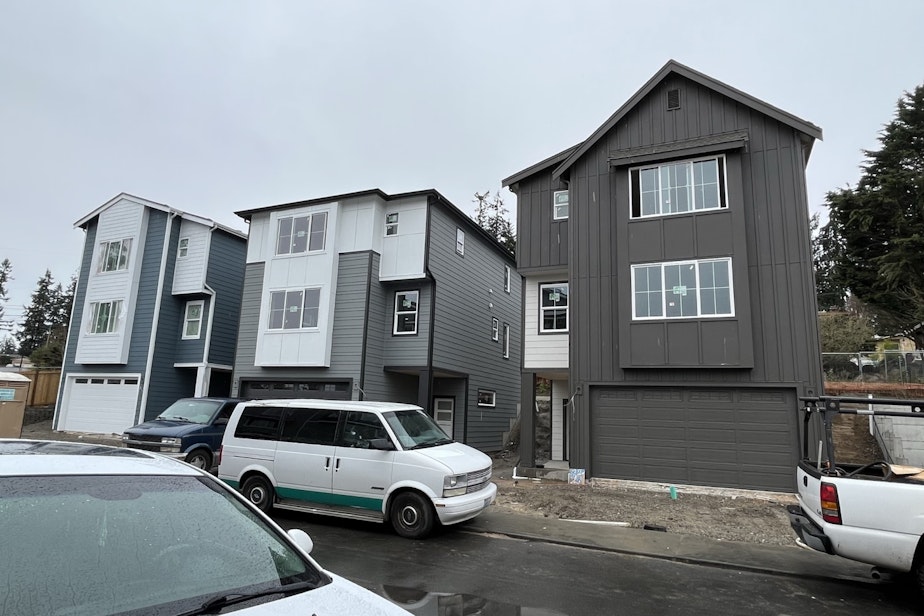
A townhome only needs 27 feet of street frontage, on average, because townhomes are smooshed up against each other.
Sponsored
Multiply those street frontage numbers by our road building costs of $7,000 per linear foot; already, even before the building is built, the townhome is already almost $80,000 cheaper.
The same thing happens with material costs, also known as "vertical costs." Townhomes require less lumber, and fewer windows – because the units in the middle don’t have as many exterior walls.
These material costs give this townhome an additional $80,000 savings over the single-family home.
Then there’s the labor, and the finance costs. It takes longer to build a single-family home, and the developer pays for the land until it's sold.
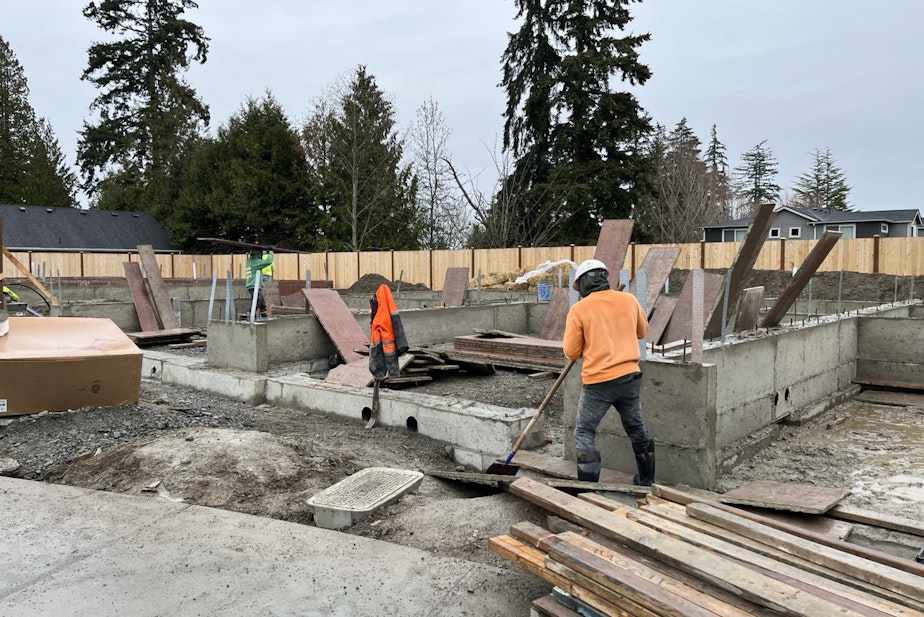
When you add up all these numbers, townhomes are about $200,000 cheaper for this developer to build on this site.
These are the savings the builder sees when building triplex townhomes. Edwards says the denser the housing, the greater the savings.
Edwards adds that his company wouldn't have bothered building single-family homes at this development at all, except for the fact that Edmonds gave them a density bonus for doing so.
So if townhomes are cheaper to build, are they also less expensive for people to buy or rent? There’s no guarantee of that.
“I’ll always tell you that the market determines how much this townhome is worth," Edwards says. "What someone is willing to pay for it is what it’s worth.”
This is where supply and demand comes in. If there are more homes than buyers, then buyers get a good deal. If it’s the other way around, you get bidding wars and rising rents.
There's another complicating factor here, too: The respective demands for single-family homes and townhomes fluctuate somewhat independently from each other. The difference in sales prices could end up being larger – or smaller than expected.
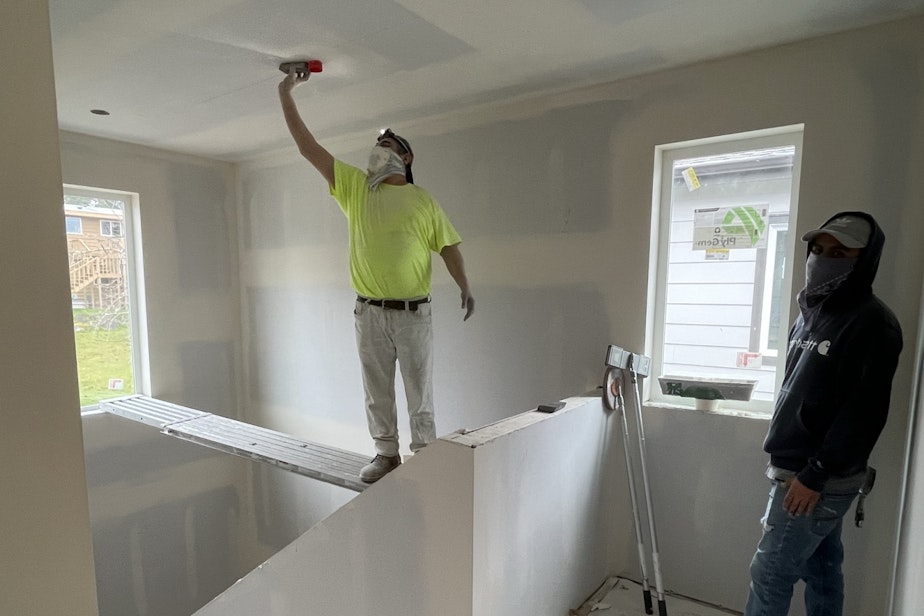
S
o with all these factors influencing the final price, how can we know, with any certainty, if housing density decreases the cost of housing?
To find an answer, we have to rise above anecdotes like this one and look at larger patterns. We have turn to science.
“I guess we usually would call ourselves social scientists," says Michael Lens, an associate professor at UCLA who analyzes housing markets and housing policy. "One key difference between science in the hard or natural sciences and social sciences is human behavior creates a whole lot more uncertainty in our neck of the woods.”
Lens wrote an influential paper in 2021 that summarized the findings of some of the most important housing research to date.
“We looked at about six studies," he says. "Five of those were clearly on the side that new housing supply on the neighborhood level helps bring affordability, or at least slow down the rising cost of rents and housing prices.”

Lens said the research shows that the benefits of increasing supply through density apply even in neighborhoods we think of as gentrifying.
The benefits apply even when the prices of new construction are so high, that people look at them and say, “That townhome is far more expensive than the home that was there before.”
But what about that sixth study – the one that shows density not increasing affordability?
It was in Minneapolis, which ended single-family zoning. Lens says there were some reasons that study may be an outlier, related to the how it used data.
“I don’t want to overstate the strength of the conclusions here," Lens says. "This is a fast-moving area of research in which we need to know more."
Lens says this is how social science works: You never want to hang your hat on a single study. Instead, you should look across a variety of research papers to see if results are being replicated. "We need to know how does this play out in different cities with different market types, in different neighborhoods,” he adds.
But by and large, Lens says the basic theory is holding up: Basic laws of supply and demand apply to the complicated and highly-regulated housing market.
Michael Lens’ paper came out in 2021, but there’s a lot more data available today, so we can expect more scientific papers soon.
In the meantime, I contacted Pew Research, a non-partisan, non-profit organization that uses data to understand complex economic issues.
Alex Horwitz is director of Pew’s Housing Policy Initiative. He explains that in a recent report, “We looked at four of the highest profile zoning reforms that happened," including Minneapolis, Minn., Portland, Ore., New Rochelle, N.Y., and Tysons, Va. They looked at what happened to rents, and whether housing got built after those changes. "Because the changes themselves got attention, but we wanted to know how the market responded," Horwitz says.
His team wanted to know: Do tenants have more power? And did the additional housing supply that was hoped for materialize?
"And in all four cases, these places added housing in at least double the rate of the U.S. overall," Horwitz says. "And they all held rent growth in check. So over the time period we looked at, rents grew 31% in the U.S. But in these places that reformed zoning, they only grew between 1% and 7%.”
S
o, to sum this all up, here’s what the science and research is telling us so far: Housing density does bring down the cost to build housing. And most studies seem to suggest that yes, this pattern is repeating over and over in cities that reform their zoning to allow more housing.
But we also know that if buyers or renters are going to see any of those savings for themselves, we need a long period of time – when there are far more homes on the market.
And it could take a while for us to get there.
A longer version of this story aired on Soundside on Thursday, 4/27, including a discussion of:
- Harm caused when renters are displaced to make room for new housing, and ways to address that.
- The phenomenon of new homes seeming to be so much more expensive than older homes.
- And the complicated stew of other variables that influence home prices, like a tug-of-war.



